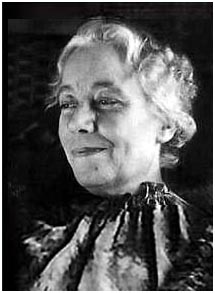In psychoanalytic theory, the id, ego and superego are three distinct, interacting agents in the psychic apparatus, defined in Sigmund Freud's structural model of the psyche. The three agents are theoretical constructs that Freud employed to describe the basic structure of mental life as it was encountered in psychoanalytic practice. Freud himself used the German terms das Es, Ich, and Über-Ich, which literally translate as "the it", "I", and "over-I". The Latin terms id, ego and superego were chosen by his original translators and have remained in use.

Narcissistic personality disorder (NPD) is a personality disorder characterized by a life-long pattern of exaggerated feelings of self-importance, an excessive need for admiration, and a diminished ability to empathize with other people's feelings. Narcissistic personality disorder is one of the sub-types of the broader category known as personality disorders. It is often comorbid with other mental disorders and associated with significant functional impairment and psychosocial disability.
A love–hate relationship is an interpersonal relationship involving simultaneous or alternating emotions of love and hate—something particularly common when emotions are intense. The term is used frequently in psychology, popular writing and journalism. It can be applied to relationships with inanimate objects, or even concepts, as well as those of a romantic nature or between siblings and parents/children.

Otto Friedmann Kernberg is an Austrian-born American psychoanalyst and professor of psychiatry at Weill Cornell Medicine. He is most widely known for his psychoanalytic theories on borderline personality organization and narcissistic pathology. In addition, his work has been central in integrating postwar ego psychology with Kleinian and other object relations perspectives. His integrative writings were central to the development of modern object relations, a school within modern psychoanalysis.

On Narcissism is a 1914 essay by Sigmund Freud, the founder of psychoanalysis.
Self psychology, a modern psychoanalytic theory and its clinical applications, was conceived by Heinz Kohut in Chicago in the 1960s, 70s, and 80s, and is still developing as a contemporary form of psychoanalytic treatment. In self psychology, the effort is made to understand individuals from within their subjective experience via vicarious introspection, basing interpretations on the understanding of the self as the central agency of the human psyche. Essential to understanding self psychology are the concepts of empathy, selfobject, mirroring, idealising, alter ego/twinship and the tripolar self. Though self psychology also recognizes certain drives, conflicts, and complexes present in Freudian psychodynamic theory, these are understood within a different framework. Self psychology was seen as a major break from traditional psychoanalysis and is considered the beginnings of the relational approach to psychoanalysis.

Narcissism is a self–centered personality style characterized as having an excessive preoccupation with oneself and one's own needs, often at the expense of others.

In Freudian psychoanalysis, the ego ideal is the inner image of oneself as one wants to become. It consists of "the individual's conscious and unconscious images of what he would like to be, patterned after certain people whom ... he regards as ideal."
In psychology, narcissistic injury, also known as narcissistic wound or wounded ego, is emotional trauma that overwhelms an individual's defense mechanisms and devastates their pride and self-worth. In some cases, the shame or disgrace is so significant that the individual can never again truly feel good about who they are. This is sometimes referred to as a "narcissistic scar".
Splitting is the failure in a person's thinking to bring together the dichotomy of both perceived positive and negative qualities of something into a cohesive, realistic whole. It is a common defense mechanism wherein the individual tends to think in extremes. This kind of dichotomous interpretation is contrasted by an acknowledgement of certain nuances known as "shades of gray".
Psychoanalytic theory posits that an individual unable to integrate difficult feelings mobilizes specific defenses to overcome these feelings, which the individual perceives to be unbearable. The defense that effects this process is called splitting. Splitting is the tendency to view events or people as either all bad or all good. When viewing people as all good, the individual is said to be using the defense mechanism idealization: a mental mechanism in which the person attributes exaggeratedly positive qualities to the self or others. When viewing people as all bad, the individual employs devaluation: attributing exaggeratedly negative qualities to the self or others.
In psychoanalytic theory, narcissistic supply is a pathological or excessive need for attention or admiration from codependents, or such a need in the orally fixated, that does not take into account the feelings, opinions or preferences of other people.
Healthy narcissism is a positive sense of self that is in alignment with the greater good. The concept of healthy narcissism was first coined by Paul Federn and gained prominence in the 1970s through the research of Heinz Kohut and Otto Kernberg. It developed slowly out of the psychoanalytic tradition, and became popular in the late twentieth century.
The true self and the false self are a psychological dualism conceptualized by English psychoanalyst Donald Winnicott. Winnicott used "true self" to denote a sense of self based on spontaneous authentic experience and a feeling of being alive, having a real self with little to no contradiction. "False self", by contrast, denotes a sense of self created as a defensive façade, which in extreme cases can leave an individual lacking spontaneity and feeling dead and empty behind an inconsistent and incompetent appearance of being real, such as in narcissism.
Narcissistic leadership is a leadership style in which the leader is only interested in themself. Their priority is themselves – at the expense of their people/group members. This leader exhibits the characteristics of a narcissist: arrogance, dominance and hostility. It is a sufficiently common leadership style that it has acquired its own name. Narcissism is most often described as unhealthy and destructive. It has been described as "driven by unyielding arrogance, self-absorption, and a personal egotistic need for power and admiration".
In social psychology, collective narcissism is the tendency to exaggerate the positive image and importance of a group to which one belongs. The group may be defined by ideology, race, political beliefs/stance, religion, sexual orientation, social class, language, nationality, employment status, education level, cultural values, or any other ingroup. While the classic definition of narcissism focuses on the individual, collective narcissism extends this concept to similar excessively high opinions of a person's social group, and suggests that a group can function as a narcissistic entity.
In psychology, narcissistic withdrawal is a stage in narcissism and a narcissistic defense characterized by "turning away from parental figures, and by the fantasy that essential needs can be satisfied by the individual alone". In adulthood, it is more likely to be an ego defense with repressed origins. Individuals feel obliged to withdraw from any relationship that threatens to be more than short-term, avoiding the risk of narcissistic injury, and will instead retreat into a comfort zone. The idea was first described by Melanie Klein in her psychoanalytic research on stages of narcissism in children.
Narcissistic defenses are those processes whereby the idealized aspects of the self are preserved, and its limitations denied. They tend to be rigid and totalistic. They are often driven by feelings of shame and guilt, conscious or unconscious.
Narcissistic elation or narcissistic coenaesthetic expansion were terms used by Hungarian psychoanalyst Béla Grunberger to highlight 'the narcissistic situation of the primal self in narcissistic union with the mother'.
The Analysis of the Self is the first monograph by the Austrian born American psychoanalyst Heinz Kohut. His biographer Charles B. Strozier has called it a masterpiece.







